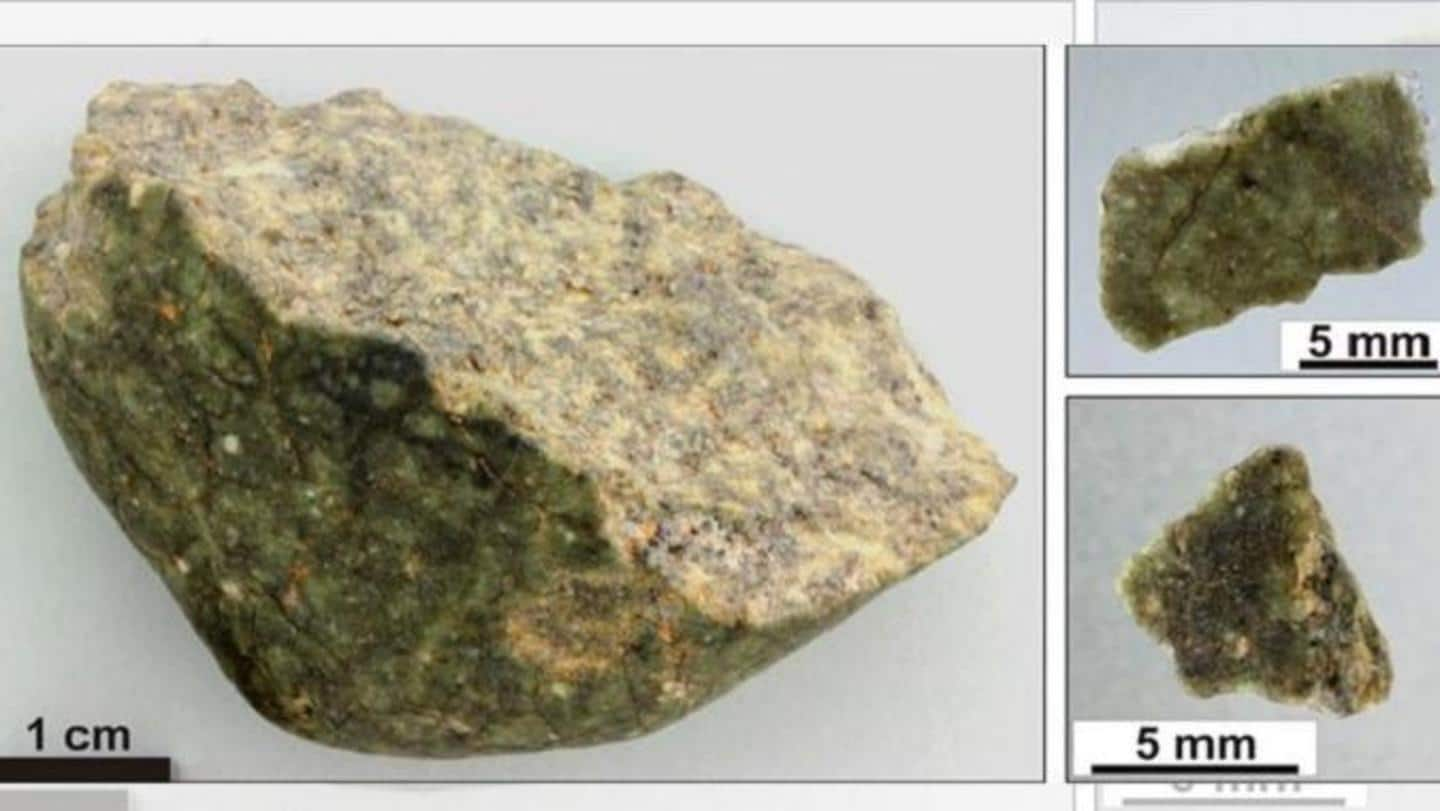
Mineral discovered in Moon meteorite could help study Earth's mantle
What's the story
A new mineral has been discovered in a lunar meteorite by European researchers.
The mineral, called donwilhelmsite, was discovered within the meteorite Oued Awlitis 001, which was found in 2014 in Western Sahara.
Donwilhelmsite is a high-pressure mineral and it could help scientists understand what happens inside the Earth's mantle, according to a study published in the journal American Mineralogist.
Discovery
Donwilhelmsite composed of calcium, aluminum, silicon, oxygen
According to the study, donwilhelmsite was discovered within shock melt zones of Oued Awlitis 001.
It is mainly composed of calcium, aluminum, silicon, and oxygen atoms, making its composition similar to the rocks comprising the Earth's continents.
The new mineral has been named after Don Wilhelms, an American lunar geologist involved in the landing site selection and data analyses of the Apollo space missions.
Explanation
Meteorite 'melt pockets' can mirror conditions in Earth's mantle
Dr. Vera Assis Fernandes of Manchester University explained that rocks—such as Oued Awlitis 001—experience extreme conditions during lunar bombardment resulting in shock melting of microscopic areas which creates melt pockets.
These shocked areas "mirror pressure and temperature regimes similar to those prevailing in the Earth's mantle," functioning as "natural crucibles" where minerals otherwise inaccessible on Earth's surface could be found.
Importance
Donwilhelmsite forms in Earth's mantle
Eroded sediments from Earth's surface are transported by wind and rivers to ocean beds. These sediments are then subducted into the Earth's mantle as part of the dense oceanic crust.
The constituent mineral of these sediments transforms at high pressures and temperatures into denser minerals, such as donwilhelmsite, once they get dragged down to depths of 460-700 km (uppermost lower mantle).
Information
Mineral important in understanding what happens in Earth's mantle
In the terrestrial rock cycle, donwilhelmsite is hence an important agent for transporting continental crustal sediments through the transition zone of the Earth's mantle. Scientists say the mineral could help explain what happens to materials within the extreme pressures of the Earth's mantle.